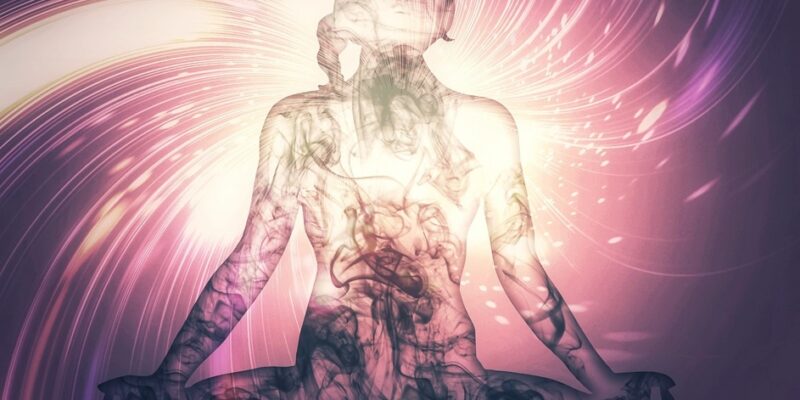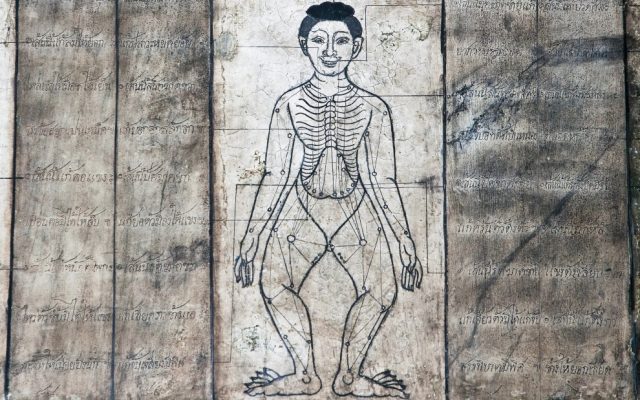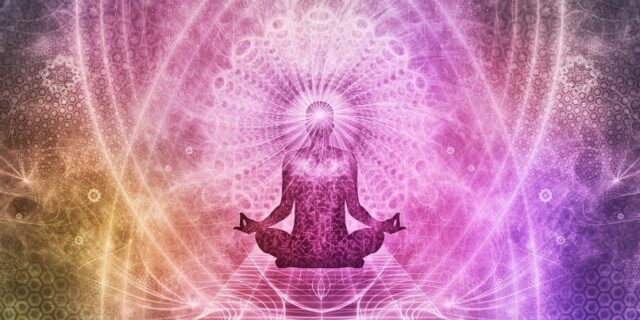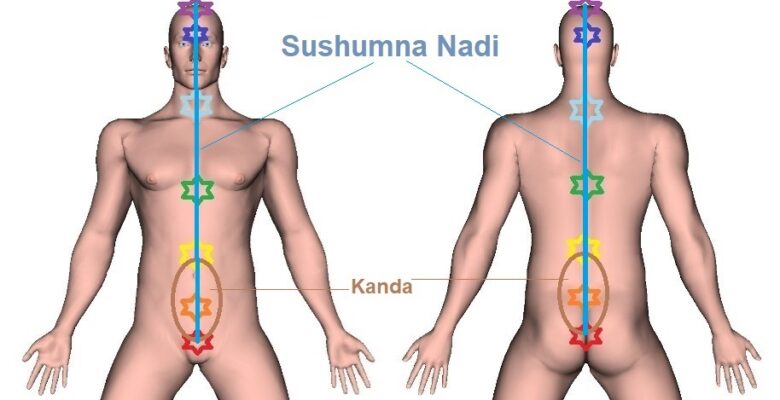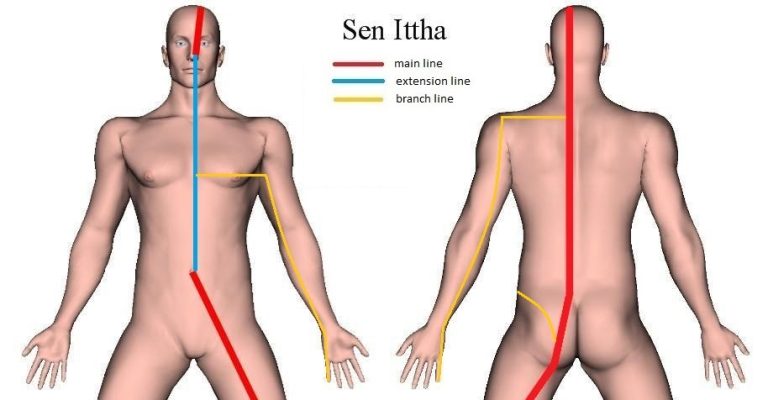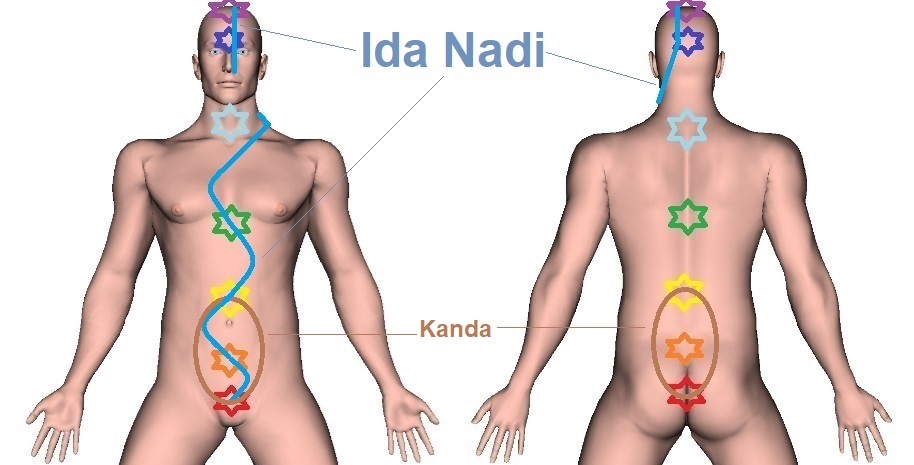
Ida Nadi, also known as Chandra Nadi or the Moon Channel, is the Prana Energy Channel located at the left side of Sushumna Nadi, and one of the fourteen main Nadis in Yoga.

Alternative names found for Ida Nadi are Candra (another way of writing Chandra), Sasi (Sahsi or Shashi), Vali, Vala, Vama, Bhagavati, and Ganga Nadi.
It’s also one of the three principal Nadis alongside Pingala Nadi and Sushumna Nadi, and represents feminine, cool, lunar, relaxing, and passive energy. It’s also the mirroring, complementary channel of Pingala Nadi, the latter Nadi considered the right-side Energy Channel compared to its location with respect to Sushumna Nadi.
Additionally, Ida Nadi stands for the “left breath,” that is, breath flowing in and out of the left nostril. Mind, however, that a few ancient texts claim that Ida Nadi ends in the right nostril (although these are by far in the minority).
Location and Pathway of Ida Nadi

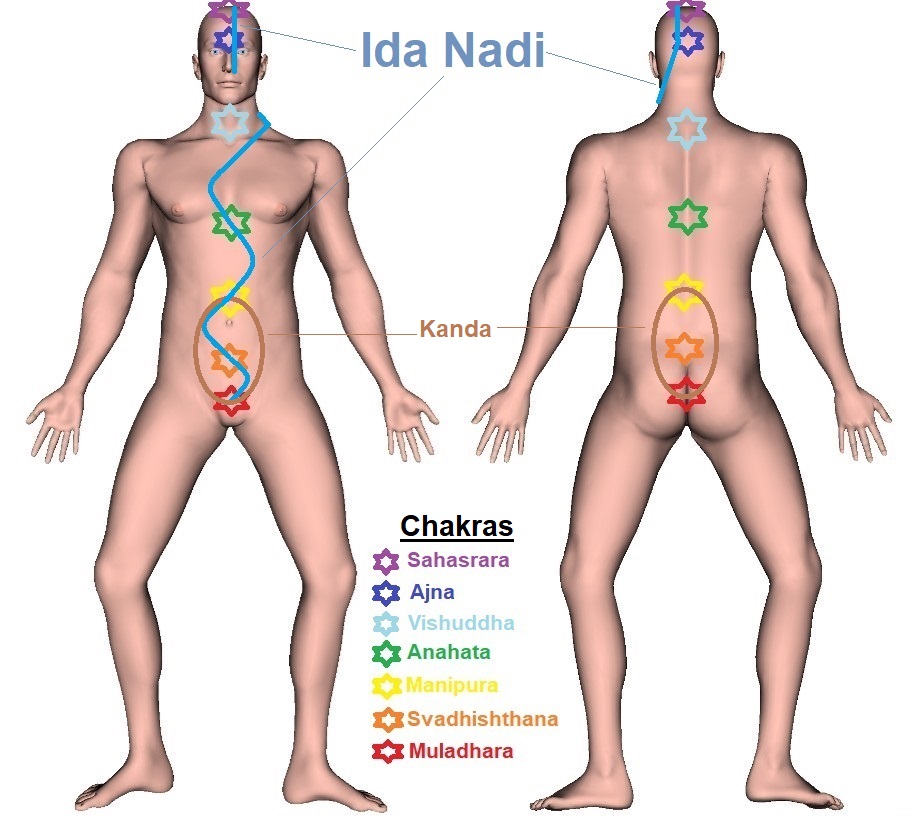
As with most of the Nadi pathways, it’s difficult to assert the exact trajectory, because the ancient scriptures typically only give starting, intermediary and/or termination points of the Nadis.

However, many authoritative Yogic texts explicitly state that Ida Nadi runs predominantly on the left alongside of Sushumna Nadi (of which the pathways is rather clear), likewise along the spinal column, and ends in the left nostril. As such, there’s relative certainty about the route Ida Nadi takes through the body.
Additionally, an interesting comparison could be made with the Prana Energy Line Sen Ittha, the equivalent and derivative of Ida Nadi in Thai Massage (and in Thai Traditional Medicine in general).
Tentatively, we’ve displayed two images above with two different pathways (two versions) for Ida Nadi. Mind that these are just examples of many possible interpretations.
Version 1 shows the Nadi going straight up from the Kanda (the purported start of all the Nadis) along the spine, which then (after the fourth Chakra — Anahata Heart Chakra) crosses the left shoulder and goes over the head to the left nostril.
Version 2 starts in the Kanda and then circles (spirals like a helix) around Sushumna Nadi and intersects with Pingala Nadi at the Chakras, which then (after the fourth Chakra — Anahata Heart Chakra) crosses the left shoulder and goes over the head to the left nostril.
By some it’s thought that Ida Nadi crosses all seven — or at least six Chakras until the Ajna Chakra (Third Eye Chakra) before proceeding to the left nostril. In these versions of the presumed pathway, Ida Nadi doesn’t diverge to the back of the body, but rather stays at the front.
In any case, one finds several trajectories (pathways) described in ancient Yoga sources, such as:
- Ida stands on the left of Susumna (Darshana Upanishad);
- Ida extends up to left nostril (Darshana Upanishad);
- Ida is on the left side and Pingala on the right side, while the Susumna is in the middle. These three are known to be the paths of Prana (Dhyana Bindu Upanishad);
- The Nadi standing on the left of Susumna is Ida. The Nadi standing on the right of Susumna is Pingala. (Dhyana Bindu Upanishad);
- Ida and Pingala conduct through the nostrils (Siddha Siddhanta Paddhati);
- You have to identify the Ida Nadi which is the protector on the left side (Kshurika Upanishad);
- There on the left is Ida, the moon-nerve; on the right is Pingala, the sun-nerve (Saubhagya Lakshmi Upanishad);
- On the left of Susumna is situated Ida and on the right is Pingala. The moon moves in Ida and the sun in Pingala (Shandilya Upanishad);
- Ida is on the left and Pingala on the right [of Susumna] (Yoga Shikha Upanishad);
- Ida and Pingala stand on the left and the right side of Susumna respectively (Yoga Chudamani Upanishad);
- Nadis Ida and Pingala stand at the left and right of Susumna. Ida originates from the navel and terminates at the left nostril and Pingala with the same origin terminates at the right nostril (Tri Sikhi Brahmana Upanishad);
- There are two nerve currents, Ida and Pingala, along the spinal column and a hollow canal, Susumna, in the middle (Hamsa Upanishad);
- The Nadi called Ida is on the left side; coiling around the central vessel (Sushumna), it enters the right nostril (Shiva Samhita);
- From the right-side portion of the Ajna lotus and going to the left nostril flows the Ida. It is here called Varana [the northward-flowing Ganges] (Shiva Samhita);
- Ida is located on the left side (Goraksha Samhita);
- Nadis located at the left and right are known as Tamasa and Rajasa respectively. Ida is of the nature of moon and Pingala is of the nature of sun (Hatha Ratnavali);
- Ida is on the left of the Sushumna and extends up to the tip of the nose on the left side (Yoga Yajnavalkya);
- Ida and Pingala are to its (Susumna) left and right. Ida is situated on the left and Pingala on right side (Vasistha Samhita );
- Ida is stretched up to the left nostril whereas Pingala keeps the right side (Vasistha Samhita );
- In time by the action of Vayu a straight long Nadi called Sushumna is produced. The mouth of the Nadi is downwards. There is a Nadi on each side of it. That on the left is Ida and that on the right is Pingala (Prapanchasara Tantra);
- Ida and Pingala in which moon and sun continuously turn, originate from the core of Kanda and course through left and right sides respectively of Susumna (Hatha Tattva Kaumudi);
- Ida, connected with the left scrotum, encircles Sushumna, passes by the right hip, goes to the heart-and thence passing by the left shoulder proceeds to the right nostril (Prapanchasara Tantra);
- Ida is situated on the left, Pingala on the right and Susumna in the middle (Shiva Swarodaya);
- Ida, to Pratibhanandanatha, on the left nostril (Bhavana Upanishad);
- Hail to the left cheek, Ida, the Sakti causing prosperity (Bhavana Upanishad);
Indications and Functions for Ida Nadi

Ida Nadi is said to stimulate and control mental energies, feelings, psychic ability, reproduction, emotions, love, intuition, care, attachment, calmness and relaxation.
This Nadi regulates the entire left side of the body. To control Ida, one needs to manipulate the breath through the left nostril. Through Ida one can control the mind.
It’s also thought that Ida Nadi can control the Parasympathetic Nervous System (PNS), which is part of the Autonomic Nervous System (ANS). The PNS typically tries to maintain, relax, or reduce the body’s activities and creates a “state of calm.” Think of regulating autonomous bodily functions such as blood pressure, breathing, blood flow, and heart rate.
A particularity of Ida Nadi is that it also seems to be connected with the left testicle in men. Additionally, Ida Nadi is associated with the color white and stands symbolically for moon qualities.







